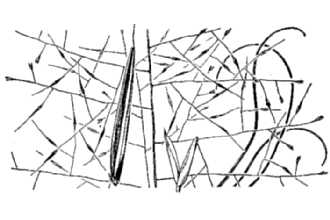Seep Muhly
Scientific Name: Muhlenbergia reverchonii Vasey & Scribn.

| General Information | |
|---|---|
| Usda Symbol | MURE2 |
| Group | Monocot |
| Life Cycle | Perennial |
| Growth Habits | Graminoid |
| Native Locations | MURE2 |
Plant Guide
Use a soil moisture meter to monitor the soil moisture where Seep Muhly is planted.
Fact Sheet
Uses
Because seep muhly is tough and wiry, it is grazed mostly during the winter. Where adapted, tt is a good conservation plant on steep highly erodible soils.
Status
Please consult the PLANTS Web site and your State Department of Natural Resources for this plant’s current status, such as, state noxious status and wetland indicator values.
Description
Grass Family (Poaceae), Seep muhly is a native, warm-season, perennial bunch grass, The height ranges from 1 to 3 feet, The leaf blade is narrow, 6 to 10 inches long, The upper blades are shorter than lower ones, mostly twisting and sharp pointed, The leaf sheath is mostly basal and longer than the internodes, The seedhead is an open panicle about 10 inches long with branchlets 1 to 2 inches long and 1 to 8 spikelets each, There is a short awn on the lemma of each spikelet, Distribution: For current distribution, please consult the Plant Profile page for this species on the PLANTS Web site, Use soil moisture sensors to measure the soil moisture of Seep Muhly.,
Management
This grass is seldom selected as a key management species. When selected, no more than 50 percent of current year's growth by weight should be removed at any season. Summer and fall grazing deferments of at least 90 days result in a forage reserve for winter. Seep muhly withstands frequent burning primarily because it grows on moist to wet sites.
Establishment
Growth starts in the early spring. If moisture is scarce, plants may become semi-dormant during midsummer and green up again in the fall. Foliage is usually a mixture of old and new growth. The seedheads form in the late summer and early fall. It will form dense bunches and grow in almost pure stands. Old basal sheaths form a curly, fibrous mass. It is adapted to rocky, highly calcareous, often mesic hillsides containing seeps. Cultivars, Improved and Selected Materials (and area of origin) Please contact your local NRCS Field Office.
